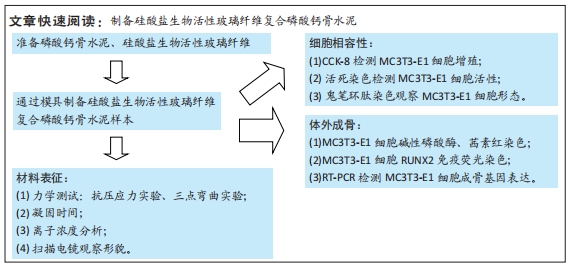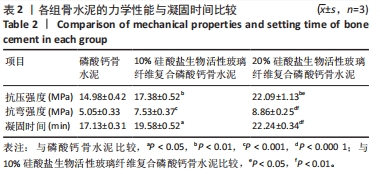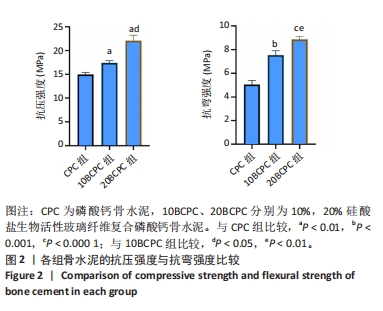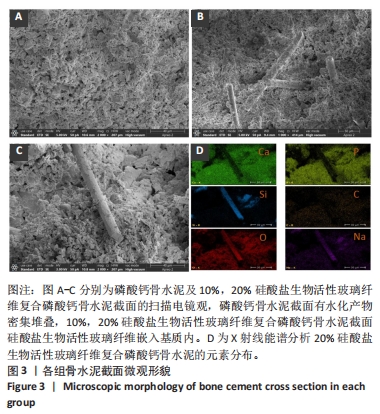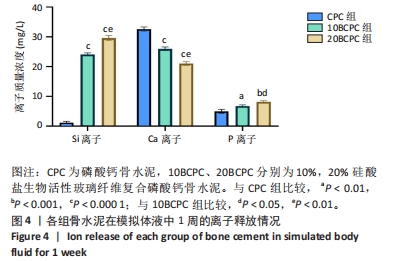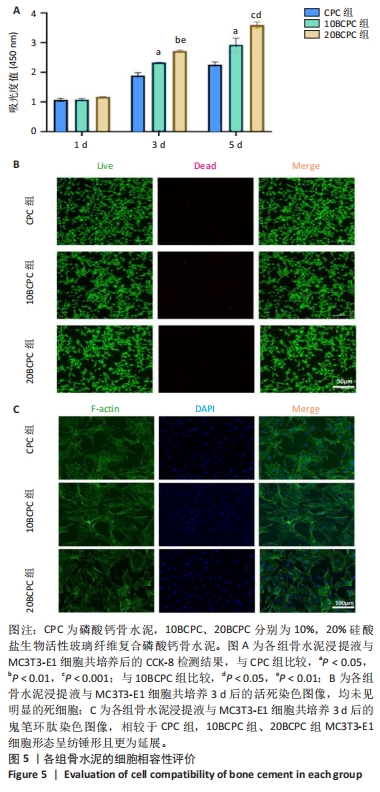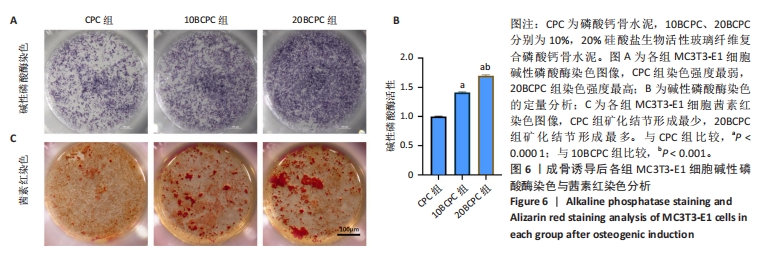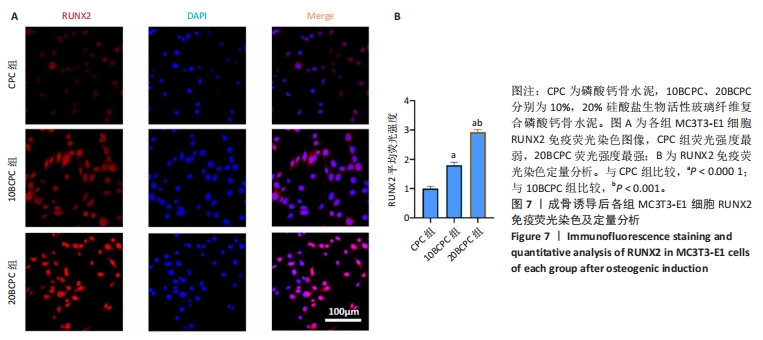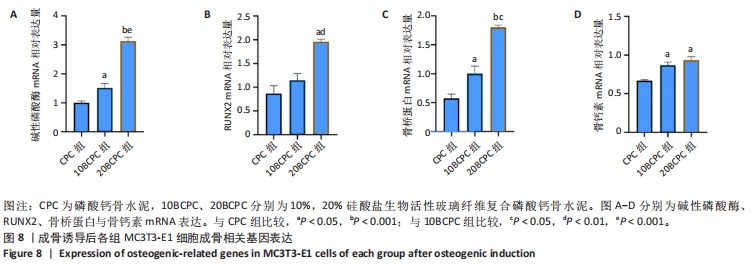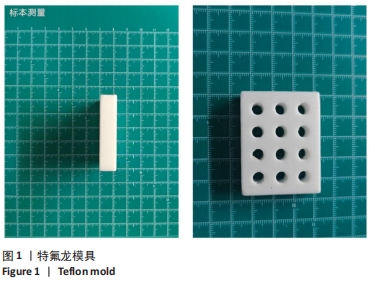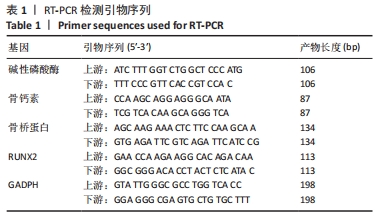[1] LODOSO-TORRECILLA I, BEUCKEN JJJP, JANSEN JA. Calcium phosphate cements: Optimization toward biodegradability. Elsevier. 2021;119: 1-12.
[2] GOLDBERG MA, KROHICHEVA PA, FOMIN AS, et al. In situ magnesium calcium phosphate cements formation: From one pot powders precursors synthesis to in vitro investigations. Bioact Mater. 2020; 5(3):644-658.
[3] ZHONG WB, SUN L, YU T, et al. Preparation and characterization of calcium phosphate cement with enhanced tissue adhesion for bone defect repair. Ceram Int. 2021;47(2):1712-1720.
[4] MD DALI SS, WONG SK, CHIN KY, et al. The Osteogenic Properties of Calcium Phosphate Cement Doped with Synthetic Materials: A Structured Narrative Review of Preclinical Evidence. Int J Mol Sci. 2023;24(8):7161.
[5] HENCH LL, POLAK JM. Third-Generation Biomedical Materials. Science (New York, NY). 2002;295(5557):1014-1017.
[6] WU ZF, LIN ZY, YAO AH, et al. Influence of particle size distribution on the rheological properties and mathematical model fitting of injectable borosilicate bioactive glass bone cement. Ceram Int. 2020;46(15):1-12.
[7] RIZWAN M, HAMDI M, BASIRUN WJ. Bioglass® 45S5-based composites for bone tissue engineering and functional applications. J Biomed Mater Res Part A. 2017;105(11):3197-3223.
[8] PAKNAHAD A, GOUDARZI M, KUCKO NW, et al. Calcium phosphate cement reinforced with poly (vinyl alcohol) fibers: An experimental and numerical failure analysis. Acta Biomater. 2021;119:458-471.
[9] 熊英杰,叶健廷,王鹏,等.可注射型磷酸镁自固化骨水泥修复大鼠股骨髁骨缺损的实验研究[J]. 解放军医学院学报,2023,44(6): 655-661.
[10] HABRAKEN WJ, WOLKE JG, JANSEN JA. Ceramic composites as matrices and scaffolds for drug delivery in tissue engineering. Adv Drug Delivery Rev. 2007;59(4-5):234-248.
[11] SCHICKERT SL, JANSEN JA, BRONKHORST EM, et al. Stabilizing dental implants with a fiber-reinforced calcium phosphate cement: An in vitro and in vivo study. Acta Biomater. 2020;110:280-288.
[12] ZANDI KARIMI A, REZABEIGI E, DREW RAL. Glass ionomer cements with enhanced mechanical and remineralizing properties containing 45S5 bioglass-ceramic particles. J Mech Behav Biomed Mater. 2019;97: 396-405.
[13] KRÜGER R, GROLL J. Fiber reinforced calcium phosphate cements -- on the way to degradable load bearing bone substitutes? Biomaterials. 2012;33(25):5887-5900.
[14] SHUAI C, ZHOU J, WU P, et al. Enhanced Stability of Calcium Sulfate Scaffolds with 45S5 Bioglass for Bone Repair. Materials (Basel, Switzerland). 2015;8(11):7498-7510.
[15] LIANG T, GAO CX, YANG L, et al. Deterioration of the mechanical properties of calcium phosphate cements with Poly (γ-glutamic acid) and its strontium salt after in vitro degradation. J Mech Behav Biomed. 2017;75:190-196.
[16] FILIP DG, SURDU VA, PADURARU AV, et al. Current Development in Biomaterials-Hydroxyapatite and Bioglass for Applications in Biomedical Field: A Review. J Funct Biomater. 2022;13(4):248.
[17] SHIKIMAKA O, BIVOL M, SAVA BA, et al. Hydroxyapatite-bioglass nanocomposites: Structural, mechanical, and biological aspects. Beilstein J Nanotechnol. 2022;13:1490-1504.
[18] YU L, LI Y, ZHAO K, et al. A novel injectable calcium phosphate cement-bioactive glass composite for bone regeneration. PLoS One. 2013;8(4):e62570.
[19] HENCH LL. Bioceramics: From Concept to Clinic. J Am Ceram Soc. 1991;74(7):1487-1510.
[20] VAN VUGT TA, GEURTS JAP, ARTS JJ, et al. Biomaterials in treatment of orthopedic infections. Management of periprosthetic joint infections (PJIs),2016.
[21] LIN CC, LEUNG KS, SHEN P, et al. Elasticity and structure of the compounds in the wollastonite (CaSiO3)-Na2SiO3 system: from amorphous to crystalline state. J Mater Sci Mater Med. 2015;26(1): 5361.
[22] KAIMONOV MR, SAFRONOVA TV. Materials in the Na2O-CaO-SiO2-P2O5 System for Medical Applications. Materials (Basel). 2023; 16(17):5981.
[23] AXRAP A, WANG J, LIU Y, et al. Study on adhesion, proliferation and differentiation of osteoblasts promoted by new absorbable bioactive glass injection in vitro. Eur Rev Med Pharmacol Sci. 2016;20(22): 4677-4681.
[24] SÖHLING N, AL ZOGHOOL S, SCHÄTZLEIN E, et al. In vitro Evaluation of a 20% Bioglass-Containing 3D printable PLA Composite for Bone Tissue Engineering. Int J Bioprint. 2022;8(4):602.
[25] KANG MS, LEE NH, SINGH RK, et al. Nanocements produced from mesoporous bioactive glass nanoparticles. Biomaterials. 2018;162: 183-199.
[26] PISHBIN F, MOURIÑO V, FLOR S, et al. Electrophoretic deposition of gentamicin-loaded bioactive glass/chitosan composite coatings for orthopaedic implants. ACS Appl Mater Interfaces. 2014;6(11): 8796-8806.
[27] ZHOU Y, WANG D, YANG Y. Biodegradation and Cell Behavior of a Mg-Based Composite with Mesoporous Bioglass. Materials (Basel). 2023;16(18):6248.
[28] ZHENG X, LIU Y, LIU Y, et al. Novel three-dimensional bioglass functionalized gelatin nanofibrous scaffolds for bone regeneration. J Biomed Mater Res B. 2021;109(4):517-526.
[29] MANOOCHEHRI H, GHORBANI M, MOOSAZADEH MOGHADDAM M,
et al. Strontium doped bioglass incorporated hydrogel-based scaffold for amplified bone tissue regeneration. Sci Rep. 2022;12(1):10160.
[30] FERREIRA SA, YOUNG G, JONES JR, et al. Bioglass/carbonate apatite/collagen composite scaffold dissolution products promote human osteoblast differentiation. Mat Sci Eng C-Mater. 2021;118:111393.
[31] SADIASA A, SARKAR SK, FRANCO RA, et al. Bioactive glass incorporation in calcium phosphate cement-based injectable bone substitute for improved in vitro biocompatibility and in vivo bone regeneration. J Biomater Appl. 2014;28(5):739-756.
[32] HASAN ML, KIM B, PADALHIN AR, et al. In vitro and in vivo evaluation of bioglass microspheres incorporated brushite cement for bone regeneration. Mat Sci Eng C-Mater. 2019;103:109775.
[33] ZHANG X, CHEN Y, FU J, et al. An injectable pH neutral bioactive glass-based bone cement with suitable bone regeneration ability. J Orthop Transl. 2022;36: 120-131.
[34] TSIGKOU O, JONES JR, POLAK JM, et al. Differentiation of fetal osteoblasts and formation of mineralized bone nodules by 45S5 Bioglass conditioned medium in the absence of osteogenic supplements. Biomaterials. 2009;30(21):3542-3550.
[35] 于龙.可注射生物玻璃-磷酸钙骨水泥复合生物材料的实验研究[D].西安:第四军医大学,2013.
[36] TAN T, SONG D, HU S, et al. Structure and Properties of Bioactive Glass-Modified Calcium Phosphate/Calcium Sulfate Biphasic Porous Self-Curing Bone Repair Materials and Preliminary Research on Their Osteogenic Effect. Materials (Basel, Switzerland). 2022;15(22):7898.
[37] WANG C, LIN K, CHANG J, et al. Osteogenesis and angiogenesis induced by porous β-CaSiO3/PDLGA composite scaffold via activation of AMPK/ERK1/2 and PI3K/Akt pathways. Biomaterials. 2013;34(1):64-77.
[38] KARPOV M, LACZKA M, LEBOY PS, et al. Sol-gel bioactive glasses support both osteoblast and osteoclast formation from human bone marrow cells. J Biomed Mater Res A. 2008;84(3):718-726.
[39] LOPES JH, SOUZA LP, DOMINGUES JA, et al. In vitro and in vivo osteogenic potential of niobium-doped 45S5 bioactive glass: A comparative study. J BIomed Mater Res B. 2020;108(4):1372-1387. |
